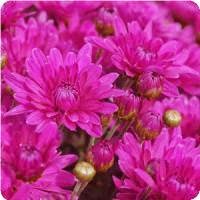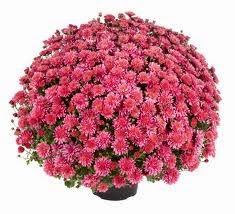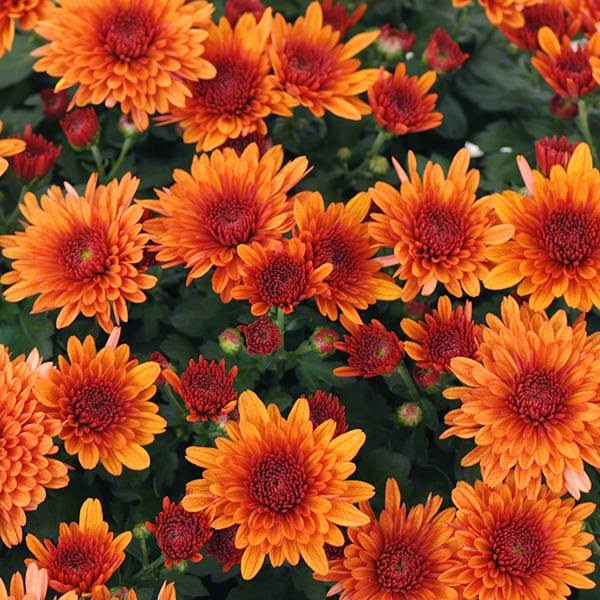PREPARE YOUR PLANT
Remove shrub or tree from its container. Check the root ball. If the roots have grown into a thick mass or are growing around the inside of the container it is crucial that you tease them out of their entangled mass. Pot-bound roots that are not teased apart will continue to grow as they are and will never be capable of sustaining the plant that relies on them. We suggest that you set your plant in a bucket of water to which a liquid root starter has been added. Soak 10-15 minutes or until the soil mass has softened up. Use your fingers or a garden pick to carefully pull the roots apart. Don't worry about breaking off a few - just cut the ragged ends with sharp pruners.
PREPARE THE SITE
Dig out a planting area only as deep as but as least twice as wide as your plant root ball. The wider the area dug - the better. If soil is poor, add up to 50% organic matter - such as well-rotted compost, rotted leaves or soil builders such as "Bumper Crop". (Ask our staff for details about this fabulous organic product!)
It is okay to use a little bit of peat moss as a part of the organic matter - but too much peat can make soil dangerously soggy during wet periods and dangerously dry and hard during drought. Organic matter is always beneficial to soil, for it improves flow and availability of oxygen, water and nutrients to plants. If your soil is not too poor and you do not want to take time to amend a large area around each planting hole, it is best not to amend average soil at all. Pampering plant roots in a planting hole of rich soil does not encourage them to grow out into your native soil. Your plants will actually grow better and be more self-sustaining in un-amended soil because roots have been forced to be tougher and more wide spreading in their search for water and nutrients.
SITUATE YOUR PLANT
Hold your plant in the hole so that the top of the root ball is level with the existing soil level. Look for the spot on your plant where the trunk flares out to meet roots and set this line level with or above the soil surface. If the plant is heavy and may settle, place it one to two inches above the existing soil level. Fan out the plant roots you so carefully teased apart and begin to refill the hole. Throw your shovel aside and use your hands to scoop and pack soil in around the roots. It is important to fill in thoroughly. Avoid leaving any air pockets behind, for they can dry out the roots. Pack soil around the root ball until your planting hole is half full. Fill hole up with water to which you have added root starter, let it drain down and settle the soil, then continue back filling the hole with soil until full. Water to settle soil again. Be sure not to mound soil up around the base of your plant any higher than it was in the original container. Planting too deeply will kill your tree or shrub. If your soil has too much clay or is not well drained, or if you have a plant that must have perfect drainage, it is a good idea to plant your nursery stock in a raised bed. Create a raised bed by digging out a planting area - then adding more soil to create a mound higher than your existing soil level. Planting in this small hill that you have created will position your nursery stock up a little higher than it would be in an un-raised bed and gravity will assure better drainage.
MULCH
Mulch your plant to conserve moisture, keep roots cool, and add organic matter and control weeds. Use only a 2 to 4 inch layer of well-aged material. Avoid a heavy layer that impedes water and oxygen flow into the soil. Avoid freshly chipped mulch, which produces acid that burns roots and young shoots. Do not mound mulch around the base of your plant, keep it pulled back 3-4 inches or to the drip line. Mulch or soil in contact with a woody plant stem often causes rot and insect damage. Water again to settle mulch.
WATER
Monitor the progress of your newly planted shrub carefully during the first growing season. Do not let it become an orphan!! Hand water new plantings regularly as needed for the first year. Do not rely on rainfall to water a newly planted tree or shrub! After established, most plants need one inch of water each 7-10 days. If rainfall is inadequate, be sure to hand water. Water thoroughly and check the soil to ensure that moisture has penetrated down four to six inches. Light and inadequate watering causes plants to form shallow roots and does more harm than good in the long run. So water deeply but only about once a week or whenever the top 2 inches of soil are dry. Be aware that overwatering can kill a plant as fast as underwatering. If a container grown tree or shrub cannot be planted right away, it must be checked daily and watered as needed. Again, do not count on rain to water your container plants.
FERTILIZE
Fertilize a woody plant with caution, especially during its establishment period. For the first year or two we suggest that you use only root starter to stimulate strong root growth, and/or slow-release pellet fertilizers such as Osmocote. Please do not use granular or water soluble "Quick Release" fertilizers (like Miracle-GroTM) on newly established trees and shrubs. These fertilizers can easily burn off young roots, especially if used too heavily or in drought conditions. Please, never use fertilizer as a "Quick Fix" solution for your plants health problems. Fertilization will never be a good substitute for building up your soils organic matter, or for proper placement, planting, mulching, watering and pruning. Know your plant and its needs. Keep your plants healthy with your attention and good care.






























